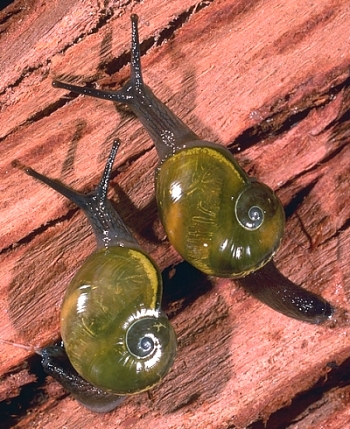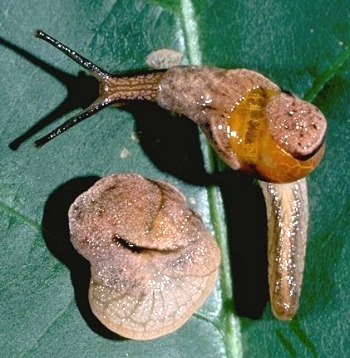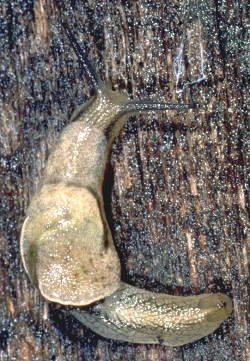
Land Slugs - the Semi-slugs
Family: Helicarionidae
PHOTO
Two eastern Australian species. Upper right: 'Snail-like' species of helicarionid. Note how shell is so thinly calcified that blood vessels and folds on the roof of the 'lung' can be seen through the shell. Lower: Photos of a slug-like helicarionid in which a large flap of skin can be drawn over the shell to disguise it. It can sometimes be found quite openly on leaves [lower left] with the head and shell completely hidden, looking like an unappetising bird 'dropping'. Photos: Bill Rudman
Here are some examples of the land snail family Helicarionidae, which are often called the semi-slugs because thet seem to be 'half-way' between snails and slugs. For example, their shells are very lightly calcified, and in some cases reduced in size. Species often have flaps of mantle which partly or wholly cover the shell. The family has a wide distribution around the world and species are both ground dwelling and arboreal [tree-dwelling]. The family gives us a good example of how snails could gradually evolve into slugs.
See
Land slugs - Introduction
Land Slugs - eggs & development


Rudman, W.B., 2006 (June 14) Land Slugs - the Semi-slugs. [In] Sea Slug Forum. Australian Museum, Sydney. Available from http://www.seaslugforum.net/factsheet/landslugs02
